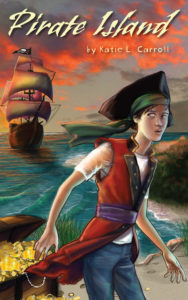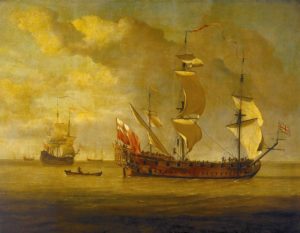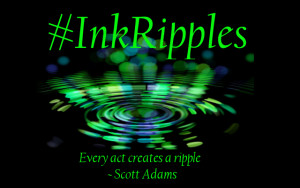Here is the next installment of #CaptainKiddHistory. These historical tidbits about Captain William Kidd are told by Billy, the main character of my upcoming middle grade adventure PIRATE ISLAND. Billy discovered and wrote down these tidbits while doing research to find Kidd’s lost treasure but before he actually looked for it on Pirate Island. Let’s give a big welcome to Billy!
September 1696 to October 16, 1697 – The Bucket Incident
by Billy Bonny

Credit: Assassin’s Creed: Memories. Creative commons license.
Billy’s comment: Yup, this image of Kidd is from a video game and it’s pretty cool!
So Kidd sets off on the Adventure Galley for Africa with a criminal crew to try and seize enemies of England and actual pirate ships. An outbreak of cholera (a really nasty disease you can get from drinking bad water) further sabotages the mission. Kidd’s rich lord backers won’t be satisfied with failure and the remaining crew is getting restless when things turn deadly.
On October 16, 1697, a Dutch ship approached the Adventure Galley. The crew urged Kidd to give the go-ahead to attack. In particular a gunner named William Moore (good first name!) challenged Kidd to let them attack. In a heated argument, Kidd ended throwing a bucket at Moore and hitting him in the head. Moore’s skull was fractured and he died the next day.
I’m not justifying killing a man, but I’m betting Kidd was afraid of outright mutiny, so trying to keep his crew from attacking a ship they had no right to attack was not out of line. Maybe he shouldn’t have thrown a bucket, but I don’t think Kidd intended to kill anyone. In addition to charges of piracy, Kidd would later be charged and convicted of murder, even though he would never know of the murder charge until his actual trail started.
And as if the proof against Kidd being a pirate isn’t already mounting up enough, think about the fact that he kept his crew from looting the Dutch ship…not something a pirate—who would attack any ship—would do but something a privateer would certainly do.
The full list of #CaptainKiddHistory posts by Billy Bonny:
January 1654? – A Legend is Born
1688 to 1689 – Mutineer and Captain
1690 to 1695 – The Archenemy and the Wife
December 1695 to September 1696 – Privateer, Not Pirate
September 1696 to October 16, 1697 – The Bucket Incident
1698 to April 1699 – A Privateer Prize and the Return of the Archenemy
June 1699 – Proof of Treasure
July 6, 1699 to May 23, 1701 – Trial and Execution
 PIRATE ISLAND blurb:
PIRATE ISLAND blurb:
A thrice cursed island, a legendary pirate treasure, and one not-so-brave boy. What could possibly go wrong?
For centuries, the whereabouts of Captain William Kidd’s lost pirate treasure has remained a mystery. When Billy’s best friend, Andy, proposes they look for it on nearby Pirate Island, Billy thinks it’s just another one of their crazy adventures. It’s usually Billy who ends up in trouble as a result, but he goes along for the ride…like always. The more he delves into the life and death of Kidd, the more he thinks the treasure is real and that it might be buried on the small island in Long Island Sound. Billy—nope, call him William—becomes obsessed with the captain of the same first name. He even believes he’s possessed by Kidd’s restless soul. Now he and the spirit of a long-dead pirate are leading the crazy adventure on Pirate Island. And what they find is far bigger than the treasure they imagined.
Now available for pre-order! Get it on Barnes & Noble, Amazon, Kobo, IndieBound, and many other of your favorite book sellers.



















 When it comes to publishing a book, there are so many more options than there used to be. If you’re new to the business, it can be downright overwhelming and confusing to decide what publishing path is the right one for you. That is why we decided to tackle the topic in this month’s
When it comes to publishing a book, there are so many more options than there used to be. If you’re new to the business, it can be downright overwhelming and confusing to decide what publishing path is the right one for you. That is why we decided to tackle the topic in this month’s 



















